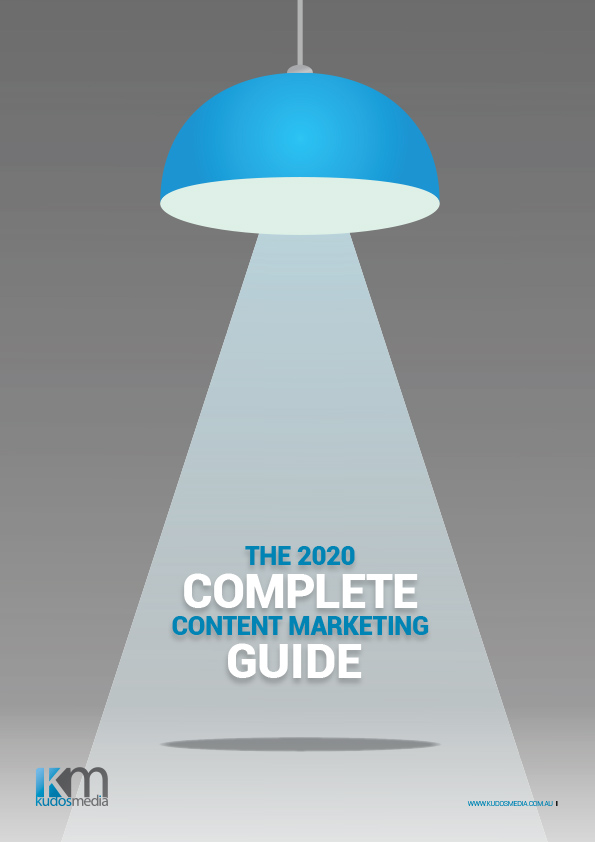Why you should be repurposing content
 Creating quality content is a time consuming exercise, so leveraging and repurposing that investment is a critical component of any content marketing strategy.
Creating quality content is a time consuming exercise, so leveraging and repurposing that investment is a critical component of any content marketing strategy.
To provide true value to your audience and customers and to become an authoritative source, content must be researched, referenced and provide a solution to their problems or deliver on their informational desires.
It must also be produced on the platform they are most likely to consume – which may not always be the same, increasing the need for repurposing your content.
The process begins with understanding what their problems, informational desires and consumption channels are and then serving solutions with authority – which may mean citing Government research papers, scholars, respected industry leaders and other credible sources.
Alternatively, engaging respected industry sources to create the content is another sure-fire method to garner it some respect – however generally an editor is needed to give it a polish and deliver it in a style and tone that will resonate with your audience.
Sourcing the makeup of your content and building a message delivery framework – beginning, middle and end – is a large component of the content generation process.
Once you have your design and framework, changing the delivery mechanism for that content is fairly straightforward. Here are some ways you can easily repurpose your content:

White Papers:
White papers are classic content marketing. They should be well designed and deliver information intuitively with a mix of graphics, tables and words in a downloadable PDF that is usually gated to drive lead generation. They might repurpose a complex blog post, however usually sit higher in the delivery of information hierarchy, with blog posts often repurposed from key sections of white papers.
Webinars:
Another excellent inbound marketing tool that complements the white paper or complex blog post. Having your industry authority available to answer questions and engage with your market sees the highest level of engagement. Attendees must sign up to view and engage with the webinar providing leads that are hot to trot.
Podcasts:
By recording the interview process with your credible source(s), it is quite simple to edit that into a simple podcast reinforcing key findings and adding credibility to your piece. Alternatively, having a voiceover of your blog posts is another means of having it consumed.
Video(graphics):
Repurposing content with video might be as simple as recording your interviews with a Q&A session, creating a motion infographic or creating a video that is the content centrepiece which is then repurposed. Video’s easy consumption on mobile devices and excellent SEO contributions make it a must-have content marketing element.
Infographics:
Infographics are easy to digest, visually appeasing, shareable social content that quickly communicates messages. There are services out there that offer template-based infographics or you can create one from scratch. Either way, a designer who understands the visual flow of content and the way the eye moves across the screen is recommended.
Posters:
Repurposing your infographic as a poster and distributing it to stakeholders to display in their workplace is no-brainer. Who wouldn’t want their content top of mind in their target market’s workplace?
Slideshare:
Designing your content into a presentation on Slideshare is another method of repurposing your content and distributing to market. Citing itself as one of the top 120 most visited websites in the world, Slideshare supplies the design interface and plenty of images to create your presentation and then segments and serves to relevant audiences.
The importance of seeding and amplification
Even the mostly finely crafted content is unlikely to be widely read if it is simply published and forgotten about. It must be seeded across multiple delivery platforms relevant to the intended audience, such as social media, email databases (segmented where possible), forums, press release distribution and collaborations with industry partners and other stakeholders.
Paid amplification through native advertising platforms, social media and search engines is also an important element in the seeding process to ensure content discoverability – and absolutely critical when there is an absence of an established audience. An amplification budget should be allocated as part of your content strategy.
DOWNLOAD our Complete Content Marketing Guide
The Complete Content Marketing Guide is a 30-page white paper detailing all aspects of developing, refining and implementing a content marketing and marketing automation strategy.

Content Marketing Strategy Development
Establishing Content Marketing Goals
Audience Analysis
Marketing Automation
Content Metrics and ROI
– Digital Content Distribution:
– Social Media
– SEO
– Video
– E-Newsletters
– Content Seeding and Amplification
Print Content Considerations
Legal considerations




